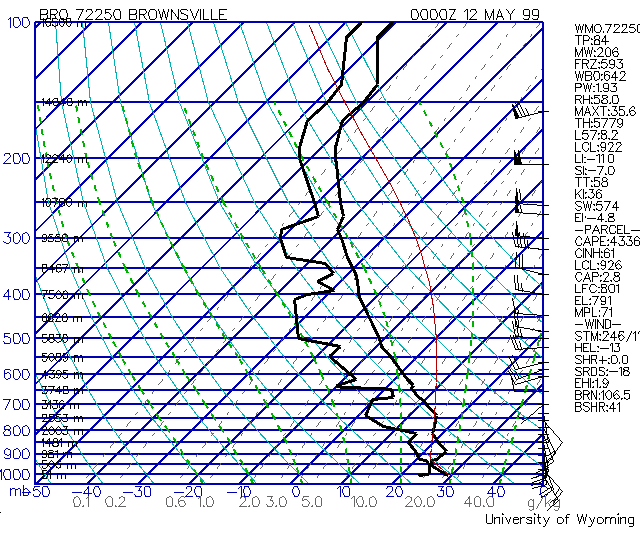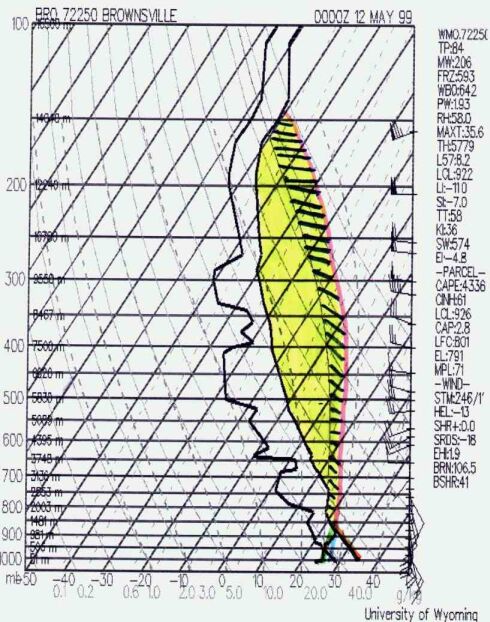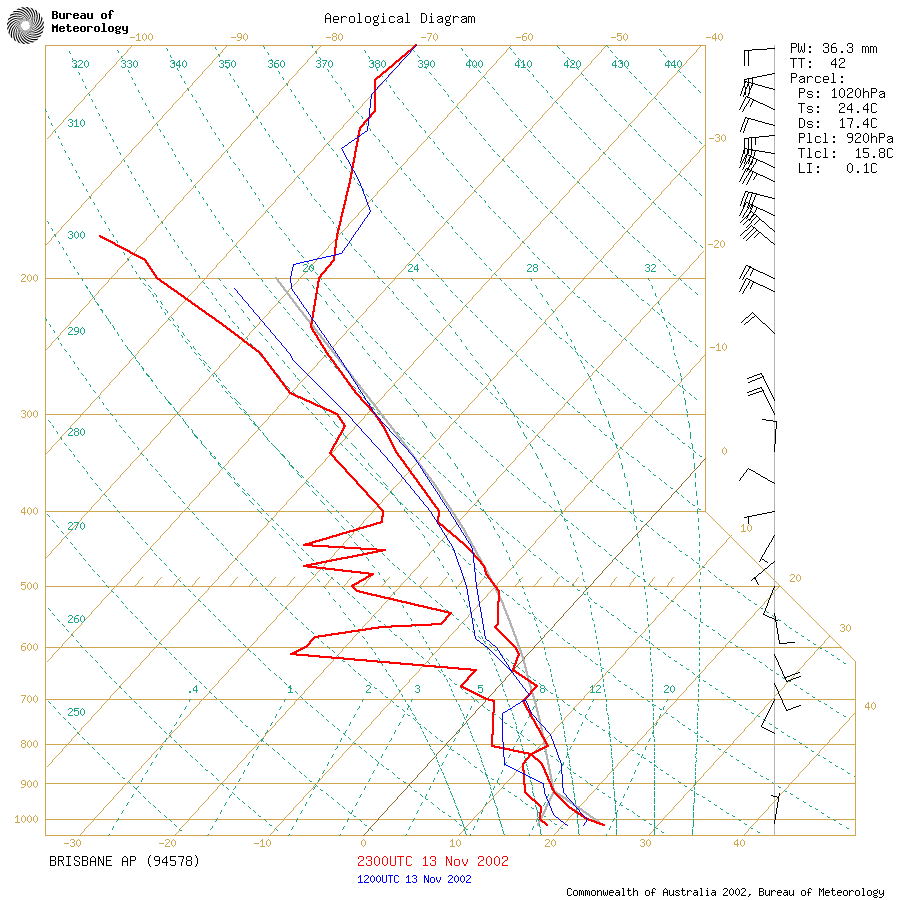| Look how far to the right the air parcel line
is to the ELR!!! The CAPE is calculated at 4336 and LIs -11 – the
atmosphere at first glance appears EXTREMELY unstable. However, technically
it isn’t! Look at the cap near 900mb, that’s a fairly large cap!
Looking at the air parcel line and ELR, air
is not going to rise above 950mb, all that CAPE above will simply go to
waste. The atmosphere at this point is “stable.” However –
if certain conditions occur, that cap could ‘break,’ for this reason, the
correct terminology is “conditionally unstable.”
Rather – it is conditional upon other variables to whether or not it will
be unstable or not. If cooler air comes aloft near 900mb (and assuming
that the warm, humid air at the surface prevails) the cap will decrease
significantly, until eventually air at the surface will be allowed free
passage through the atmosphere. Conditionally unstable atmosphere’s
generally cause the most severe thunderstorms. The reason for this,
is that all the heat of the day is kept at the surface, and then when the
cap suddenly breaks, you have an entire day's heat energy from the Sun
to utilise in energy and ‘fuel’ for thunderstorms. There are a multitude
of other ways the cap can be broken, quite frequently it is by added heat
at the surface. If you heat the air up further at the surface, it
is more likely to be warmer then the rest of the atmosphere as it rises.
A trigger will also help break the cap, in many situations just heating
a conditionally unstable atmosphere isn't quite enough to break the cap,
you still need some forcing to help get the initial parcels of air rising.
Here we come into the basics of nowcasting and forecasting CAPE during
situations such as these.
We learnt before that air will cool at the
DALR (Dry Adiabatic Lapse Rate) until it reaches 100% humidity (ie saturated),
and then from that point it will cool at the SALR (Saturated Adiabatic
Lapse Rate). The point at which this changes is the LCL (Lifted Condensation
Level) - ie the base of the clouds. However, this path changes as
heat and moisture at the surface changes. As heat and/or moisture
at the surface increases, the air parcel line is “shifted” to the right.
The LCL also changes as heat and moisture changes. Both of these
points are critical. But using this information that's been presented,
do you think if we added enough heat (or moisture) into the atmospheric
situation described by the sounding that we might be able to break the
cap?
What do we need to know here to work it out?
Well...we need to know:
a) by how much is the theoretical air parcel
plot shifted to the right? And...
b) where is the new LCL?
The relationship can be related by “Normands
Theorem.” This simply states this:
That the LCL is where the following lines intersect:
- The DP (Dewpoint)
from 1000mb, taken up through the atmosphere following the pattern of a
mixing ratio line.
- The T (Temperature) at 1000mb, taken up
through the atmosphere following the pattern of a DALR line.
Where these two intersect, is where the LCL
will lie. Lets assume that the DP remains the same, but the temperature
rises to 35C during the day.
From the DP, follow a mixing ratio line upwards
for a few centimetres. From the temperature, follow a DALR up for
a few centimetres, see where the two intersect? Tadah!. We have now
just found our new LCL! We can now plot the rest of the Skew-T.
We can now clearly see that the atmosphere has become unstable! We
have also added more CAPE, as we can see the area between the air parcel
line, and the ELR has increased considerably. Our CAPE is now well
in excess of 5000! Not to mention the atmosphere is now unstable,
we can now expect some very large (and severe) thunderstorms. |






